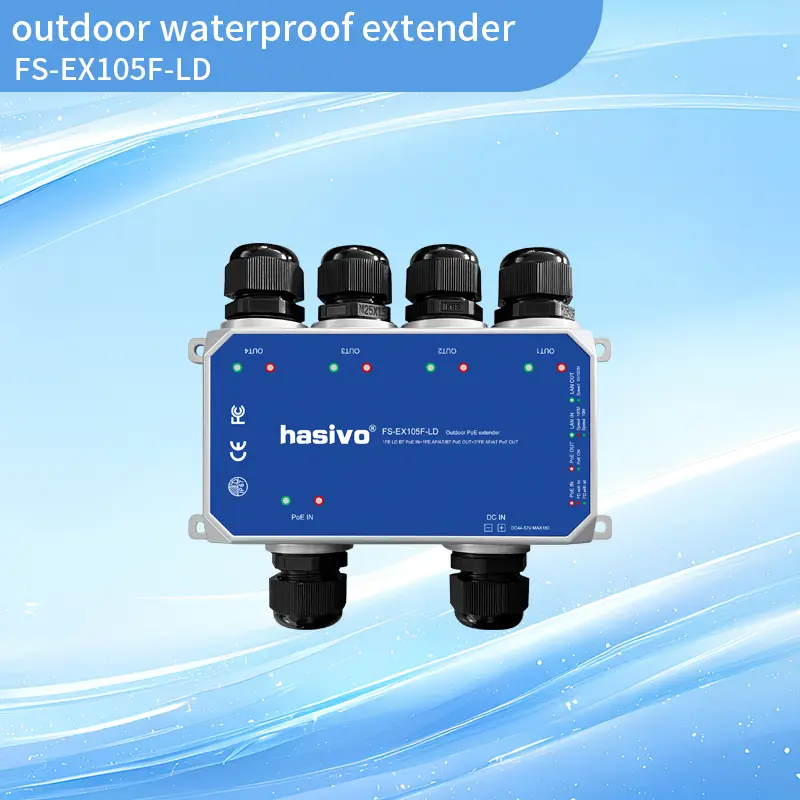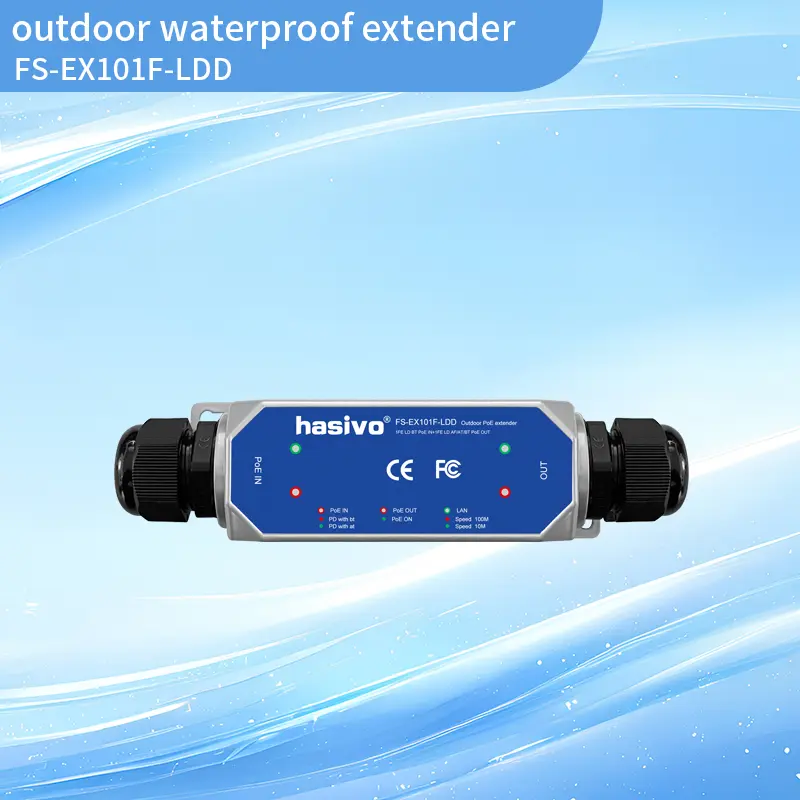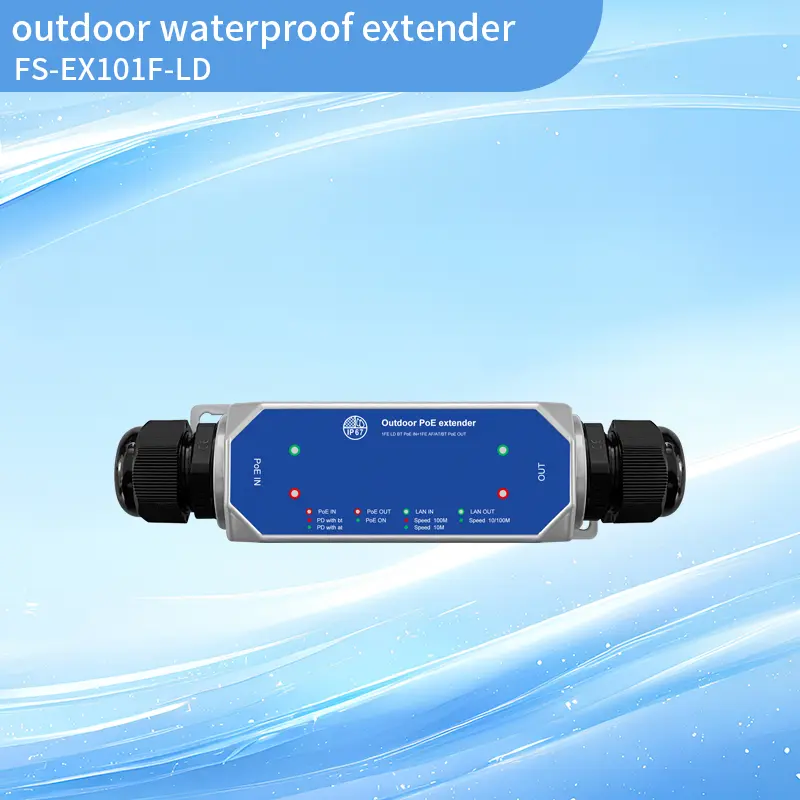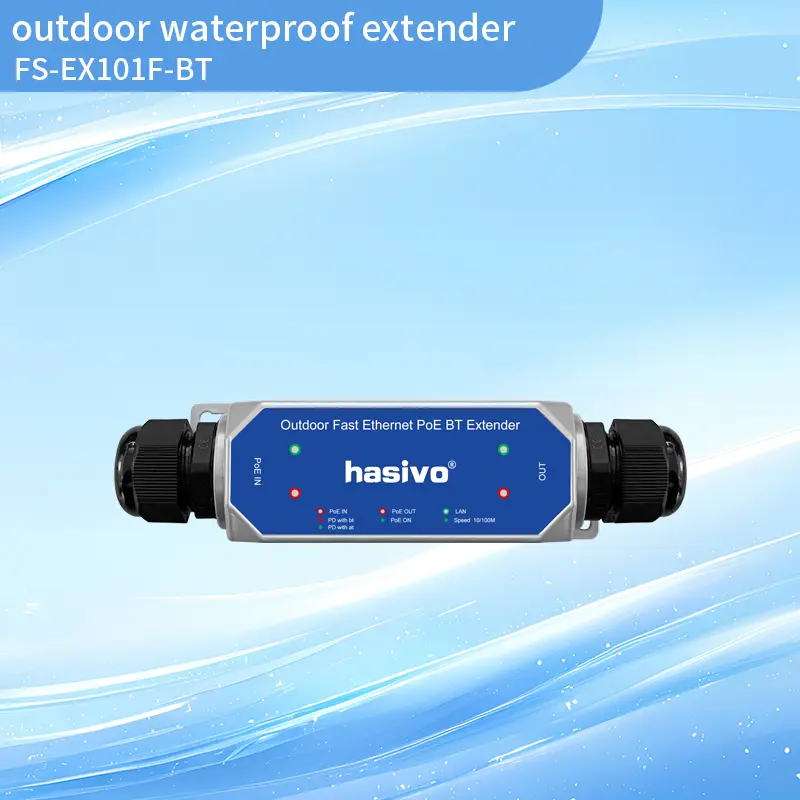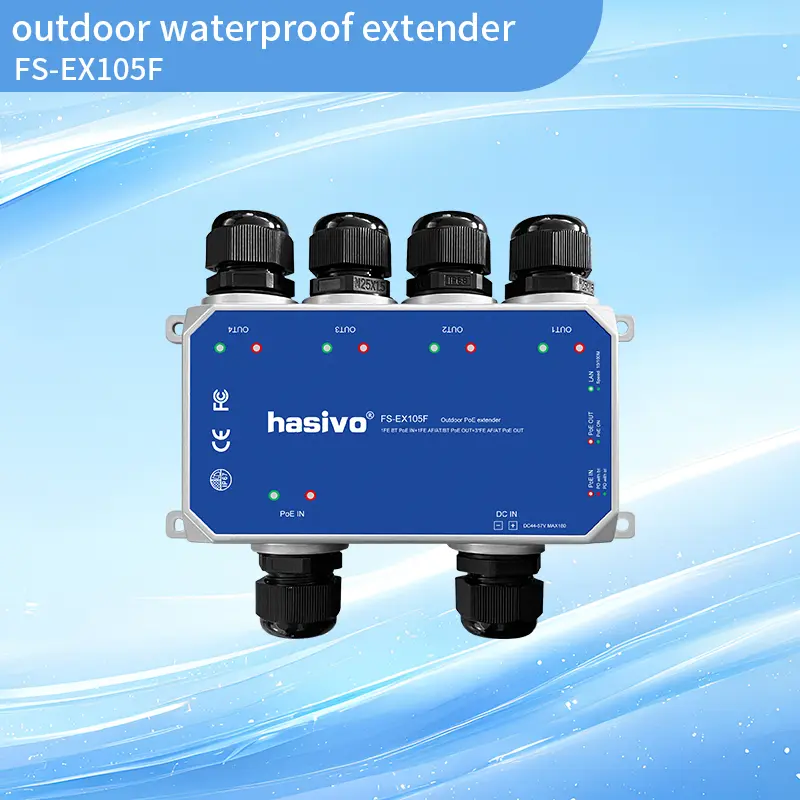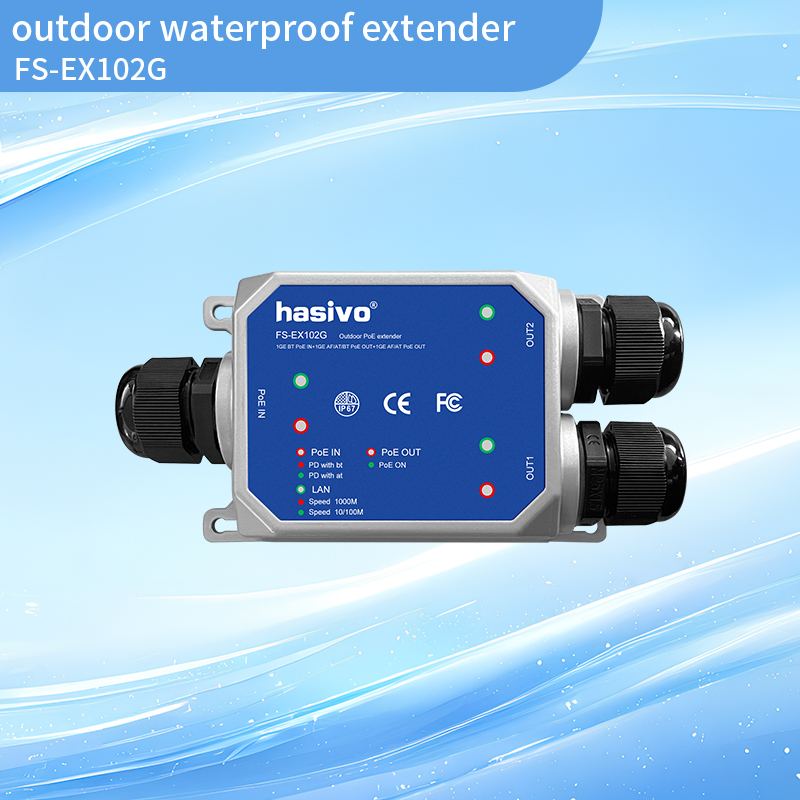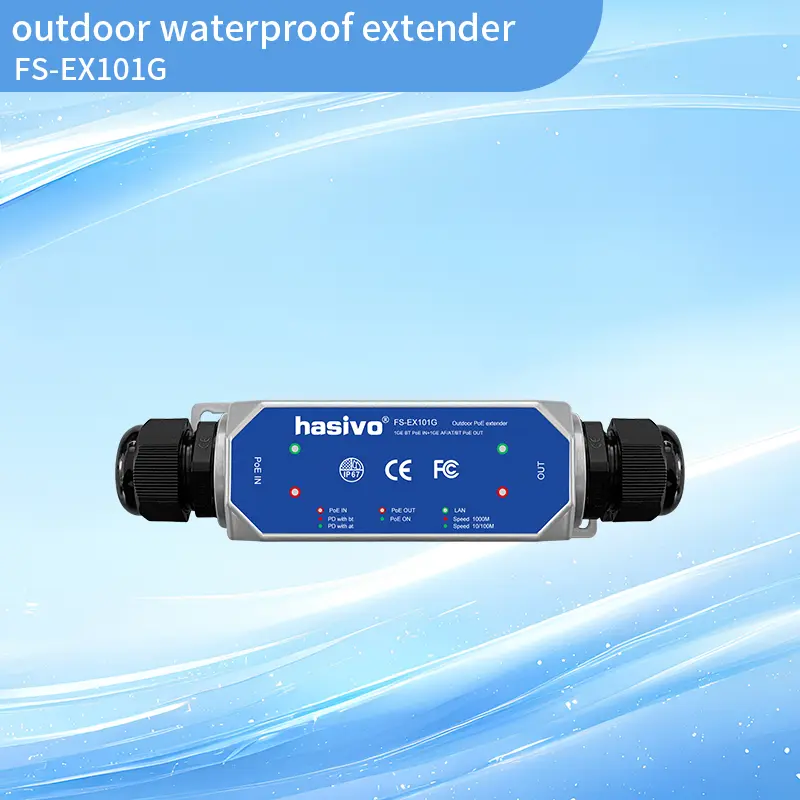
Ai series PoE switches are designed to automatically detect and power devices that comply with IEEE802.3af/at | Power over Ethernet++ | HiPoE standard. It now integrates HiPoE and PoEdog functionality to specifically address the power challenges of high-power outdoor dome cameras, high-power wireless APs and similar devices. The PoEdog function can automatically repair the PD device when it unexpectedly crashes, eliminating time-consuming and labor-intensive manual operations and achieving intelligent unattended operation.
100Mbps access, gigabit uplink
The entire series supports the combination of "100M network port + Gigabit optical multiplexing port", allowing users to have flexible networking to meet the needs of diverse scenarios. All ports support line-speed forwarding and provide high-speed bandwidth processing capabilities. HiPoE: Ports 1 and 2 provide 60W power to solve the problem of high-power PD power supply, and are compatible with high-power PoE devices such as large dome machines, wireless APs or smart door locks. PoEdog: After PoE is activated, it can monitor the status of PoE equipment in real time; when the equipment is abnormal, it will automatically identify and supply power to the PoE equipment to ensure that non-PoE equipment is not damaged. The PoE port has a priority mechanism to ensure that power is given to high-priority ports first when the power is low to prevent equipment overload.


Strong business capabilities
Supports IEEE 802.1Q VLAN, users can flexibly divide VLAN according to needs. It also supports QoS based on three priority modes: port, 802.1P and DSCP, and provides four queue scheduling algorithms: Equ, SP, WRR and SP+WRR. In addition, it also supports ACL to filter data packets by configuring matching rules, processing operations and time permissions, providing flexible security access control policies. The switch also supports IGMP V1/V2 multicast protocol and IGMP Snooping to meet the needs of multi-terminal high-definition video surveillance and video conferencing access. In addition, it also supports multicast VLAN and multicast filtering, which can effectively transmit data, save network bandwidth, and reduce network load. Other features include port monitoring, quad binding of IP addresses, MAC addresses, VLANs, and ports for filtering packets.
Supports STP/RSTP/MSTP spanning tree protocols to eliminate Layer 2 loops and achieve link backup. It also provides spanning tree security features to protect devices in spanning tree networks from malicious attacks. It also supports static and dynamic aggregation, effectively increasing link bandwidth, achieving load balancing, link backup, and improving link reliability. Additionally, once a port reaches its maximum learning capacity, it stops learning MAC addresses, supporting port security, preventing MAC address attacks and managing port network traffic.








